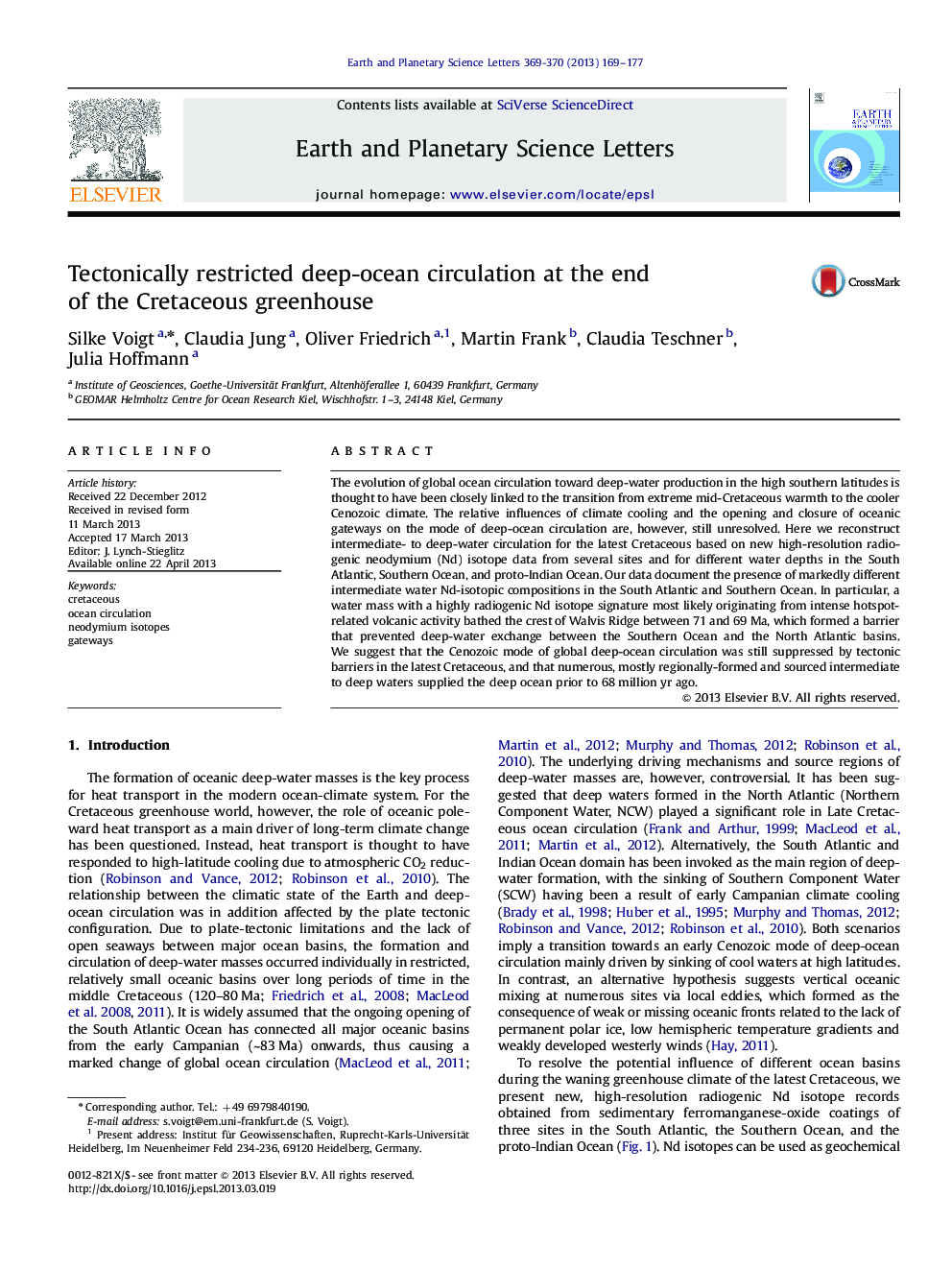| Article ID | Journal | Published Year | Pages | File Type |
|---|---|---|---|---|
| 4677103 | Earth and Planetary Science Letters | 2013 | 9 Pages |
•New Cretaceous Nd isotope records obtained from ferromanganese-oxide coatings.•Radiogenic Nd isotope signatures on top of Walvis Ridge in the Maastrichtian.•Hotspot-related volcanic activity between 71 and 69 Ma.•Walvis Ridge limited deep-water flow between the South Atlantic and Southern Ocean.•Deep ocean circulation in the Atlantic was maintained by meso-scaled eddies.
The evolution of global ocean circulation toward deep-water production in the high southern latitudes is thought to have been closely linked to the transition from extreme mid-Cretaceous warmth to the cooler Cenozoic climate. The relative influences of climate cooling and the opening and closure of oceanic gateways on the mode of deep-ocean circulation are, however, still unresolved. Here we reconstruct intermediate- to deep-water circulation for the latest Cretaceous based on new high-resolution radiogenic neodymium (Nd) isotope data from several sites and for different water depths in the South Atlantic, Southern Ocean, and proto-Indian Ocean. Our data document the presence of markedly different intermediate water Nd-isotopic compositions in the South Atlantic and Southern Ocean. In particular, a water mass with a highly radiogenic Nd isotope signature most likely originating from intense hotspot-related volcanic activity bathed the crest of Walvis Ridge between 71 and 69 Ma, which formed a barrier that prevented deep-water exchange between the Southern Ocean and the North Atlantic basins. We suggest that the Cenozoic mode of global deep-ocean circulation was still suppressed by tectonic barriers in the latest Cretaceous, and that numerous, mostly regionally-formed and sourced intermediate to deep waters supplied the deep ocean prior to 68 million yr ago.
